Renault Trafic Bus VS Dacia Bigster – Porównanie danych technicznych, wydajności i ceny
Sprawdź, który samochód lepiej spełni Twoje oczekiwania!
Model Renault Trafic Bus (Bus) jest wyposażony w silnik Diesel i skrzynię Manuel. Dla porównania, Dacia Bigster (SUV) ma silnik Mild Hybrid Benzyna, Pełna Hybryda albo LPG i przekładnię Manuel albo Automatyczna.
Jeśli chodzi o pojemność bagażnika, Renault Trafic Bus oferuje , natomiast Dacia Bigster zapewnia 667 L – wszystko zależy od Twoich potrzeb. Jeśli szukasz większej mocy, zdecyduj, czy 150 KM w Renault Trafic Bus czy 155 KM w Dacia Bigster będzie dla Ciebie lepszy.
Są też różnice w zużyciu energii/paliwa: 6.80 L vs 4.70 L. Pod względem ceny, Renault Trafic Bus zaczyna się od 196000 zł, a Dacia Bigster jest dostępny od 105400 zł.
Porównaj wszystkie kluczowe parametry i sprawdź, który model najlepiej pasuje do Twojego stylu życia!
Renault Trafic Bus
Trafic Autobús to niezwykle wszechstronny pojazd, który łączy w sobie funkcjonalność i komfort podróżowania. Idealnie sprawdza się zarówno w miejskim transporcie, jak i na dłuższych trasach, oferując przestronne wnętrze dla pasażerów. Dzięki nowoczesnemu designowi oraz przemyślanym rozwiązaniom, stał się ulubieńcem zarówno kierowców, jak i pasażerów.
szczegółyDacia Bigster
The Bigster is poised to redefine the SUV segment with its bold design and spacious interior, catering to the needs of both families and adventure seekers alike. Emphasizing sustainability and practicality, this model reflects a modern approach to automotive engineering, making it a compelling choice for environmentally conscious drivers. With its striking presence on the road, the Bigster not only captures attention but also embodies a new era of versatile mobility.
szczegóły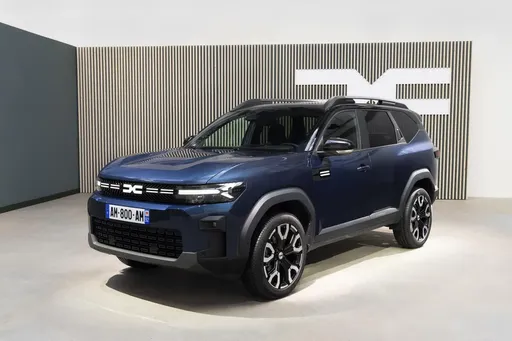 @ media.renault.at
@ media.renault.at
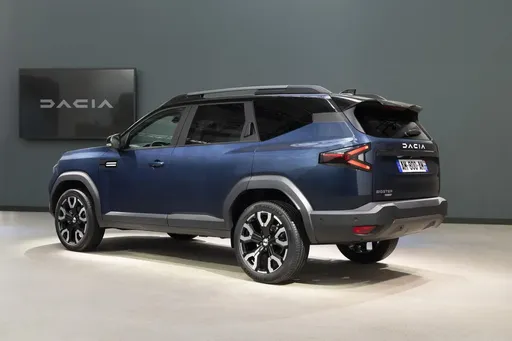 @ media.renault.at
@ media.renault.at
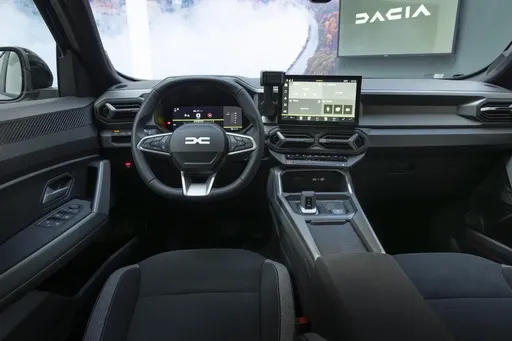 @ media.renault.at
@ media.renault.at
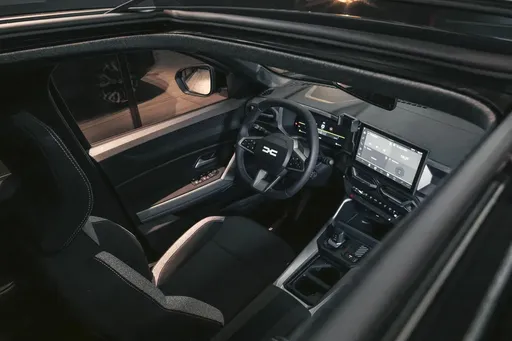 @ media.renault.at
@ media.renault.at
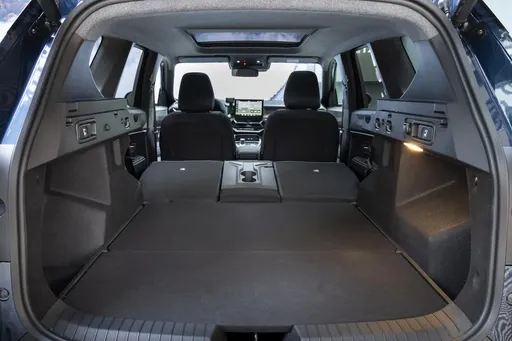 @ media.renault.at
@ media.renault.at

|
|
|
|
|
Koszty i Zużycie |
|
|---|---|
|
Cena
196000 - 261700 zł
|
Cena
105400 - 134400 zł
|
|
Zużycie L/100km
6.8 - 7.2 L
|
Zużycie L/100km
4.7 - 7.1 L
|
|
Zużycie kWh/100km
-
|
Zużycie kWh/100km
-
|
|
Zasięg elektryczny
-
|
Zasięg elektryczny
-
|
|
Pojemność baterii
-
|
Pojemność baterii
-
|
|
CO2
179 - 188 g/km
|
CO2
106 - 137 g/km
|
|
Pojemność zbiornika paliwa
80 L
|
Pojemność zbiornika paliwa
50 - 55 L
|
Wymiary i Nadwozie |
|
|---|---|
|
Typ nadwozia
Bus
|
Typ nadwozia
SUV
|
|
Miejsca siedzące
8 - 9
|
Miejsca siedzące
5
|
|
Drzwi
4
|
Drzwi
5
|
|
Masa własna
2031 - 2321 kg
|
Masa własna
1425 - 1547 kg
|
|
Pojemność bagażnika
-
|
Pojemność bagażnika
510 - 667 L
|
|
Długość
5080 - 5480 mm
|
Długość
4570 mm
|
|
Szerokość
1956 mm
|
Szerokość
1813 mm
|
|
Wysokość
1973 - 1974 mm
|
Wysokość
1705 mm
|
|
Ładowność
749 - 982 kg
|
Ładowność
383 - 467 kg
|
Silnik i Wydajność |
|
|---|---|
|
Typ silnika
Diesel
|
Typ silnika
Mild Hybrid Benzyna, Pełna Hybryda, LPG
|
|
Skrzynia biegów
Manuel
|
Skrzynia biegów
Manuel, Automatyczna
|
|
Szczegóły skrzyni biegów
Manualna skrzynia biegów
|
Szczegóły skrzyni biegów
Manualna skrzynia biegów, Zautomatyzowana manualna
|
|
Rodzaj napędu
Napęd na przednie koła
|
Rodzaj napędu
Napęd na cztery koła, Napęd na przednie koła
|
|
Moc KM
110 - 150 KM
|
Moc KM
130 - 155 KM
|
|
Przyspieszenie 0-100km/h
13.6 - 16.5 s
|
Przyspieszenie 0-100km/h
9.7 - 11.2 s
|
|
Maksymalna prędkość
161 - 174 km/h
|
Maksymalna prędkość
180 km/h
|
|
Moment obrotowy
300 - 350 Nm
|
Moment obrotowy
230 Nm
|
|
Liczba cylindrów
4
|
Liczba cylindrów
3 - 4
|
|
Moc kW
81 - 110 kW
|
Moc kW
96 - 115 kW
|
|
Pojemność silnika
1997 cm3
|
Pojemność silnika
1199 - 1799 cm3
|
Ogólne |
|
|---|---|
|
Rok modelowy
2023 - 2024
|
Rok modelowy
2025
|
|
Klasa efektywności CO2
G
|
Klasa efektywności CO2
E, D, C
|
|
Marka
Renault
|
Marka
Dacia
|
Renault Trafic Bus
Renault Trafic Autobús: Rewolucja w transporcie osób
Renault Trafic Autobús to nowoczesny i wszechstronny środek transportu, który łączy w sobie komfort, pojemność i najnowsze technologie. W 2023 roku model ten zyskał jeszcze większą popularność dzięki innowacyjnym rozwiązaniom oraz niezawodnym jednostkom napędowym.
Rozbudowana oferta silnikowa
W ofercie Renault Trafic Autobús znajdują się różne wersje, które zaspokajają potrzeby zainteresowanych zarówno małych, jak i większych grup pasażerów. Silniki diesla o mocach 110, 150 oraz 170 KM zapewniają nie tylko dynamiczną jazdę, ale też dobrą efektywność paliwową. Na przykład, wersje z silnikiem o mocy 110 KM charakteryzują się zużyciem paliwa na poziomie 6.8 L/100 km, co czyni je idealnym wyborem dla firm transportowych oraz instytucji.
Innowacyjne rozwiązania technologiczne
Renault nieustannie wprowadza innowacje do Trafic Autobús, aby zwiększyć komfort i bezpieczeństwo podróży. Wśród nowości znajdują się zaawansowane systemy wspomagające prowadzenie pojazdu, takie jak asystent parkowania, tempomat adaptacyjny oraz systemy monitorowania martwego pola. Te rozwiązania sprawiają, że prowadzenie busa staje się znacznie łatwiejsze i bardziej bezpieczne, co jest szczególnie ważne w kontekście większej liczby pasażerów.
Przestronność i komfort wnętrza
Wnętrze Renault Trafic Autobús zostało zaprojektowane z myślą o wygodzie użytkowników. Pojazd pomieści do 8 pasażerów, a przestrzeń bagażowa z łatwością pomieści wszystkie niezbędne rzeczy. Wysokiej jakości materiały wykończeniowe oraz ergonomiczne fotele gwarantują komfort nawet podczas dłuższych podróży. Dodatkowo, zainstalowano systemy klimatyzacyjne, które utrzymują optymalną temperaturę w kabinie.
Ekologiczność i oszczędności
Jednym z kluczowych atutów Renault Trafic Autobús jest jego efektywność energetyczna. Pojazdy klasyfikowane są w zakresie emisji CO2 do klasy G, co oznacza, że są zgodne z aktualnymi standardami ekologicznymi. Oszczędności paliwowe oraz niski poziom emisji dwutlenku węgla stanowią duże atuty dla przedsiębiorstw, które dbają o środowisko.
Podsumowanie
Renault Trafic Autobús to model, który łączy w sobie nowoczesne technologie, komfort i ekologię. Dzięki różnorodności jednostek napędowych, przestronności wnętrza oraz innowacyjnym rozwiązaniom, jest to doskonały wybór dla przewozu osób. Niezależnie od tego, czy to transport turystyczny, czy codzienna komunikacja, Trafic Autobús zawsze spełnia oczekiwania swoich użytkowników.
Dacia Bigster
Introducing the Dacia Bigster: A Game Changer in the SUV Market
The Dacia Bigster is poised to redefine the landscape of compact SUVs with its striking design, innovative technologies, and a variety of powertrains that cater to a broad range of consumers. As the automotive world continues to shift towards sustainability without compromising performance, the Bigster stands out with its thoughtful engineering and modern features.
Striking Design and Practicality
From the moment you lay eyes on the Bigster, you can see that it was designed with purpose. Its robust silhouette, bold front fascia, and wide stance convey a sense of strength and stability. With dimensions of 4570 mm in length, 1813 mm in width, and standing 1705 mm tall, the Bigster offers a spacious cabin that comfortably accommodates five passengers. Coupled with a trunk capacity ranging from 546 to 667 liters, this SUV is as practical as it is stylish, making it perfect for both city driving and outdoor adventures.
Powerful and Efficient Engines
The Dacia Bigster offers a range of engine options designed to meet diverse consumer needs. The line-up includes two petrol MHEV variants: the TCe 130 and TCe 140, both available in front-wheel drive and all-wheel drive configurations. These engines not only deliver robust performance, with outputs between 130 and 140 HP, but also prioritize fuel efficiency, achieving consumption figures as low as 5.5 liters per 100 kilometers.
For those seeking an eco-friendlier option, the Bigster also features a Full Hybrid variant, the Hybrid 155, which offers an impressive 155 HP with a fuel efficiency rating of just 4.7 L/100 km. Additionally, the ECO-G 140 LPG variant allows for even more cost-effective driving without sacrificing power, catering especially to environmentally conscious consumers.
Innovative Technology Enhancements
The Dacia Bigster is equipped with an array of advanced technological features aimed at enhancing the driving experience. Its comprehensive infotainment system integrates a user-friendly interface with smartphone connectivity, ensuring that drivers can stay connected while on the road. Safety has also been prioritized, with features such as advanced driver assistance systems designed to keep both the driver and passengers secure.
Performance Meets Efficiency
Performance is a central theme in the Bigster's engineering. The SUV boasts a range of acceleration times, with the TCe 130 reaching 0-100 km/h in approximately 11.2 seconds and the TCe 140 doing so in a swift 9.8 seconds. The Hybrid model enhances this performance even further, offering a 0-100 km/h time of just 9.7 seconds. With a maximum speed of 180 km/h, the Bigster is not only capable but also thrilling to drive.
Comfort and Versatility
Inside, the Dacia Bigster emphasizes comfort and versatility with a roomy cabin that features high-quality materials and modern finishes. The SUV is designed with adjustable seating configurations and ample legroom, making it ideal for both daily commutes and longer journeys. It's also worth mentioning that the vehicle's curb weights range from 1425 kg to 1503 kg, optimized for performance and efficiency.
Conclusion: The Future of Driving with Dacia Bigster
The Dacia Bigster is more than just a new SUV; it represents a significant step forward in blending efficiency, performance, and practicality in an ever-evolving automotive landscape. With various engine options, advanced features, and a commitment to sustainability, it is clear that the Bigster is designed to meet the demands of modern drivers while appealing to a wide audience. Whether you are looking for a reliable city cruiser or a capable outdoor companion, the Dacia Bigster is set to deliver on all fronts.
Wyświetlane ceny i dane są szacunkowe, oparte na niemieckich cenach katalogowych i mogą się różnić w zależności od kraju. Te informacje nie stanowią wiążącej oferty.
